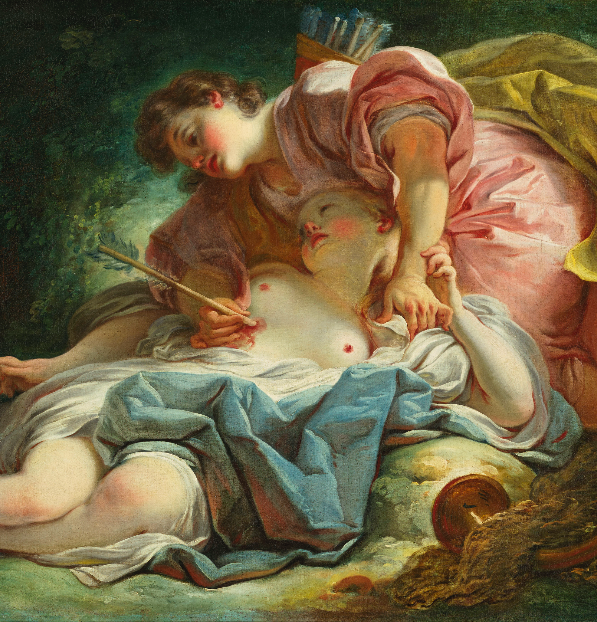<body><p>Array</p></body>
[[{"fid":"1021","view_mode":"default","fields":{"format":"default","field_file_image_alt_text[und][0][value]":"","field_file_image_title_text[und][0][value]":"","field_copyright[und][0][value]":""},"type":"media","attributes":{"class":"media-element file-default","height":690,"style":"height: 345px; width: 500px; float: left; margin-right: 20px;","title":"Jean-Honoré Fragonard, Corésus et Callirhoé, vers 1762, Rmn-Grand Palais / Benoît Touchard / Mathieu Rabeau, Musées d'Angers / photo P. David","width":1000}}]]... as the Abbé Pluche wrote in 1739: "The romances of Jupiter [are only painted] to fill our thoughts with pleasure [...] through a continual parade of libertine pursuits."
Since Regency (1715-1723), "libertinism" had triumphed among the elite by adopting the forms and the civilised veneer of gallantry, while in actual fact being a hedonistic quest for carnal pleasure that was completely detached from romantic sentiment. So-called "pleasure spaces", formal salons and even the décor for the bed-chamber of Louis XV at the Château de Marly were covered in romantic mythological paintings.
It was in this school of painting that Fragonard trained. He produced his first sensual, decorative paintings under the influence of Boucher. During his time in Rome as a resident student at the Académie de France, between 1756 and 1761, he studied first hand the masterpieces of Antiquity. Upon his return, he created a magnificent series of etchings, the Games of the Satyrs, bringing antique art back to life in the most resolute manner. Eventually, in 1765, he became an eminent painter due to the success of Coresus and Callirhoe, a sombre mythological love story where simmering feelings coalesce with the tragedy of passion. Boucher's lesson had now been surpassed.
Book your ticket
#expoFragonard


